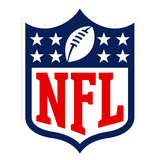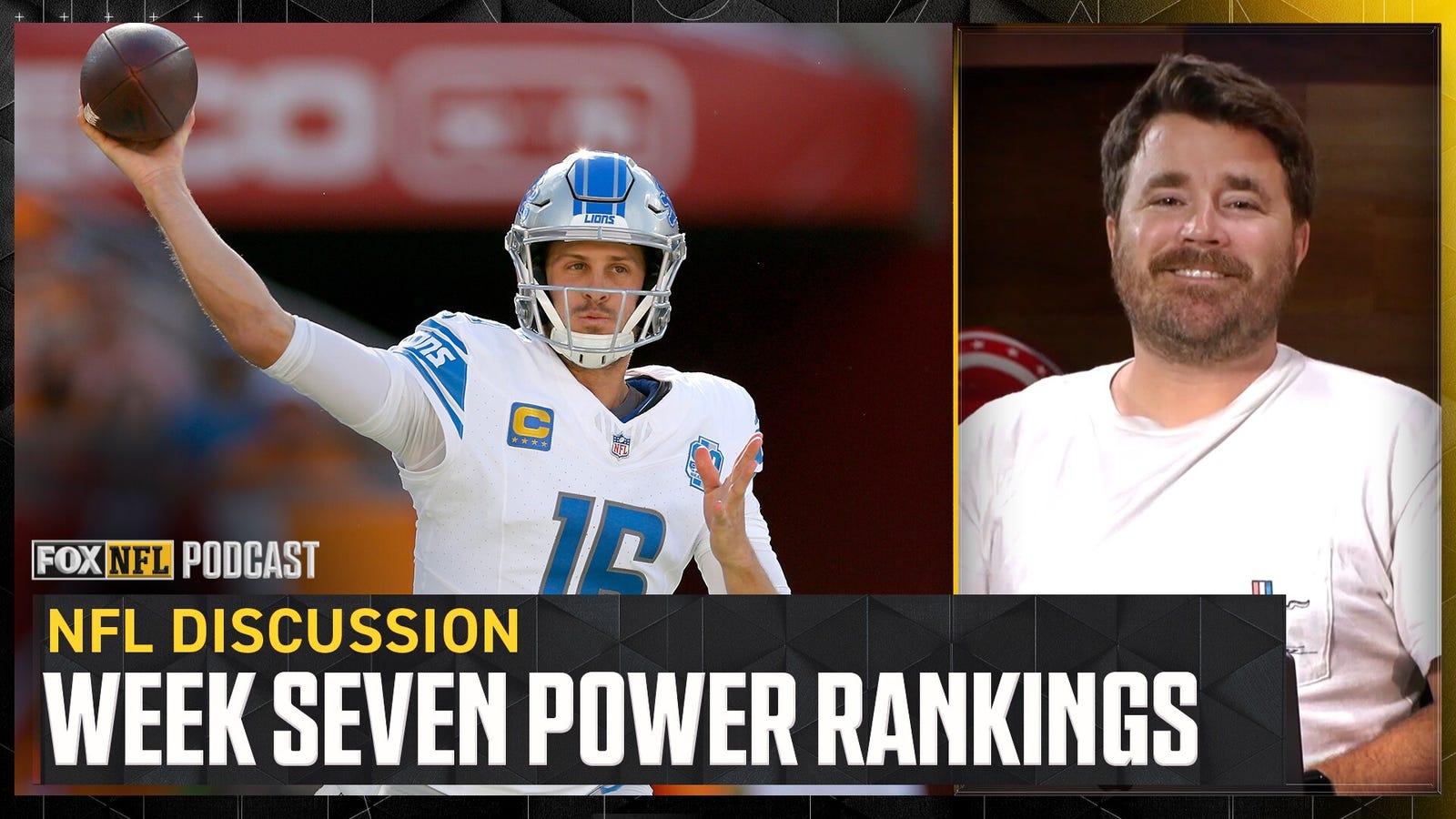At the beginning of the season, Miami Dolphins receiver Tyreek Hill and offensive coordinator Frank Smith were receiving nonstop text messages from coaches, scouts and players in the NFL and in college about the same thing.
Everyone wanted to know more about coach Mike McDaniel’s schematic wrinkle called “Speed Motion” or (more fun) “Cheat Motion.”
X’s and O’s nerds instantly fell in love with it. The idea feels a bit like pointillism: Why use a whole brushstroke when a dot will do? And while a dot (and the Cheat Motion) doesn’t look like much on its own, it’s a thing of beauty in the greater composition.
The Dolphins rolled out the concept in Week 1, with the team shortening the distance that Hill ran in motion but using that pre-snap movement with more efficiency. And most interestingly, he motioned toward the line of scrimmage, often behind one of his teammates. (Usually, all motions in the NFL go outside in. This one goes inside out.)
ADVERTISEMENT
The results were good in Week 1. So good, in fact, that many teams had copied it by Week 2 — including the Dolphins’ opponent, the New England Patriots. Now, just about every NFL offense has used the Cheat Motion.
“Guys are fascinated by our offense, the way that Coach got me motioning around,” Hill told reporters in September. “They are like, ‘Bro, where does that come from?’ I’m like, ‘You know what, I have no idea.'”
Smith said the Cheat Motion “is the No. 1 thing that I’m getting texts about lately from all levels, high school all the way up to the pros.”
The Cheat Motion is one of McDaniel’s many schematic wrinkles that has flummoxed defensive coordinators to start the season. The Dolphins have been historically successful in every element of offense, with a unit and scheme that Bills coach Sean McDermott called “almost revolutionary.” Miami is first in points per game (37.2), first in passing yards (1,943), first in scrimmage yards (3.034) and first in plays of 20-plus yards (38). Quarterback Tua Tagovailoa is first in pass yards (1,876), passing touchdowns (14) and passer rating (114.1).
This is a historically successful offense — with a unique flair, as exemplified by the Cheat Motion.
It’s the newest trendy concept that spreads across every level. We’ve seen things like this before: zone read, run-pass option, the Philly Special, the Tush Push and — who could forget — Spider 2 Y Banana.
One team makes it work. Everyone else wants to try.
Rams coach Sean McVay and 49ers coach Kyle Shanahan — who coined the term “Cheat Motion” — immediately put it into their playbooks. Texas coach Steve Sarkisian has used it. It’s everywhere. But no one uses it more than the Dolphins because it doesn’t fit anyone else’s offense quite like it does the Dolphins offense, and that’s because Miami probably has the fastest skill players in the history of the NFL.
Hill is the reason why this motion exists.
“I’m tired as hell from it,” Hill said after a Week 2 win over the Patriots. “I’m going to sleep all day tomorrow. … It definitely gives us leverage.
“It’s like the Philly quarterback sneak. It’s just the Miami version. It’s sexy. It’s flashy. It’s fast. That’s what Miami is about.”
You have to love Hill’s salesmanship. Because McDaniel, who declined an interview request for this story, has largely downplayed how Cheat Motion has become so popular in the football world in the wake of the Dolphins’ success.
He was asked how he came up with it.
“I was just bored,” McDaniel said after Week 1. “I think it is important to be constantly pressing the envelope. I believe that players deserve schematic advantages. It’s hard enough to do their job, and a coach’s job is to try to generate those. But man, I’ve drawn a lot of stuff on paper. It’s a lot harder doing it.”
The Cheat Motion helps a small receiver (like Hill) build speed before the snap. Having a running start creates an immediate advantage. If the Cheat Motion involves going behind another receiver, it almost acts like a rub route before the play begins (forcing the defensive backs to communicate a switch). Put it all together and you’ve empowered a fast receiver to play even faster against a reeling defensive back who has lost the advantage of physicality.
“It definitely allows us to catch the defense off guard in many ways,” Hill told reporters in September. “It definitely gives us an advantage.”
If the motion passes through a bunch of receivers and defenders can’t figure out who has whom, then you get busted coverages. With all their speed, Miami turns busted coverages into touchdowns.
Now, you might be thinking: This kind of sounds like the CFL, where receivers are allowed vertical running starts. Well, you wouldn’t be the first person to think that. And you also wouldn’t be the first person to be wrong in thinking that. Current CFL coach and former NFL and college coach Marc Trestman weighed in on the concept.
“I remember hearing somebody say that on the telecast, but really, it’s entirely different,” Trestman told FOX Sports. “I don’t think it is original. I just think it’s more visible because of the explosiveness of Tyreek. … It’s really unrelated to the CFL.”
Well, that’s no fun.
“I think what you’re seeing is something that’s really cyclical. … I don’t know that it’s entirely unique,” Trestman said. “I do think, with all due respect, Mike’s done a tremendous job utilizing the talent that he has.”
McDaniel has taken something from the past and tailored it to the present to make his players better. That’s just good coaching. In football, everything has been done before. But from the endless annals of NFL archives, McDaniel plucked this concept and put it into his playbook. And now, Hill might set receiving records.
So why doesn’t everyone do it?
Well, let’s go back to what McDaniel alluded to: the difficulty of running this concept.
For a team like the Rams, who have used Cheat Motion often with undersized speedster Tutu Atwell, the receiver doesn’t get into his route as naturally as Hill, who has clearly practiced it a much higher clip and therefore has the timing down to perfection with Tagovailoa. Atwell hesitates and looks back at his quarterback for the snap. That kills his momentum and, in a way, defeats the largest purpose of the concept — which is to help the receiver build speed before the snap.
Tagovailoa and Hill have internal-clock timing so that Hill can put his head down and sprint — breaking upfield at just the right instant. In some cases, the Dolphins even use a silent count. Tua simply cues the snap when he sees Hill get to a certain point of the field.
That gets us to the next difficulty: timing. Center Liam Eichenberg (new to the position) has been sharp about where he places the ball in shotgun. (Yes, ball placement is important for centers, just like for quarterbacks.) The snap should help Tagovailoa move with the flow of the motion, especially if he needs to hand the ball off or fake a handoff. Tagovailoa then has to time his feet and delivery to make sure he hits Hill (or the player Hill is serving as a decoy for) at the right moment.
“The one thing that you learn in Canada, because there’s so much vertical stuff, is the [quarterback’s] drops have to coordinate with the fact that they’re not stationary starts [for receivers],” Trestman said. “So the quickness of the drop and getting the ball out of your hand comes faster with that kind of speed coming off the line of scrimmage.”
OK, Marc, so there are some similarities between Cheat Motion and the CFL’s motions.
From a practical standpoint, teams also have to ask themselves if utilizing this motion is actually what’s best for the receiver. Can the receiver use his elite speed to avoid contact from the defensive back? Can he control his speed in and out of his routes? Can the quarterback get the ball out quickly enough, given that the receiver is getting downfield faster?
“Tyreek is such a unique dude,” Shanahan said in September. “He’s the one dude with those motions that’s fast enough to run any route known to man off of them. Not many people are like that, so they get to try a lot of stuff with that. Mike’s as good as anyone at trying stuff and being creative.”
And then, finally, there is no play if the team is penalized for a false start, an illegal formation or an illegal motion.
Penalties are the most common problem for an offense that uses a lot of motion. But Miami has improved enormously in this department. This year the Dolphins offense has six pre-snap penalties (tied for fourth-fewest). Last year, their offense had 27 pre-snap penalties (tied for 11th-most).
The great thing about the Cheat Motion is that it highlights Tagovailoa’s talents, too. Not only do the Dolphins have the fastest and most agile wideout at a full sprint before the snap, but they have a quarterback who probably has the quickest release in the league. (He has the fastest time to throw in the NFL at 2.37 seconds, per Next Gen Stats.) That’s why, in the big picture, the Dolphins use motion more than anyone else. It helps Tua play even faster, because Tyreek is set up to succeed with speed. It even helps the Dolphins’ middling offensive line, because the linemen don’t have to protect the passer for as long.
They say football is a game of inches. But it’s also a game of milliseconds. Motions can change the outcome of a play.
“I think it’s kind of the bedrock to what we do,” Smith said when asked about Miami’s use of pre-snap motion. “We start up day one in first installation and we’re moving. … We don’t move to move. Like some people say, ‘Hey that was eye candy,’ or something to that extent. For us, there is a reason for everything we move, and why we do it.”
The Dolphins use motion on a league-high 86.1% of their offensive plays, according to FOX Sports Research. The 2022 Dolphins used pre-snap motion on 81.2% of their offensive plays and have the current season record (with the tracking going back to 2014).
Compare that to an innovative offense like that of the Eagles. Philly uses shifts or motions on just 29.2% of snaps, the second-least in the NFL. So this isn’t to say that motion directly correlates with success. It’s just to say that it correlates with the Dolphins’ success.
Miami uses motion so much that the players expect it.
“When it becomes your norm, guys kind of get uncomfortable now when there isn’t a motion on a play. They’re like, ‘Where’s the rest of the play?'” McDaniel said.
But remember: Hill is sprinting during these motions, and that’s exhausting for him. This year, he has traveled 77.8 yards per game in pre-snap shifts, according to Next Gen Stats. But that’s actually less than normal for him. Here’s the beauty of the Cheat Motion: It shortens the amount that Hill has to run before the snap.
In 2023, the Dolphins have sent Hill on a shift or motion on a career-high 21.9% of his snaps. But this season, he has averaged traveling 9.0 yards per play before the snap when he is used in a shift or motion. That’s down from 11.5 yards in 2022. And when he played for the Chiefs, he averaged more than 12 yards per pre-snap shift/motion.
Efficiency.
You can see why — even with the issues — other teams want to make use of this play.
It was a beautiful full-circle moment when Shanahan, McDaniel’s former boss and mentor, began talking about a concept born in Miami.
“They did that in Week 1 with a little Cheat Motion,” Shanahan told reporters last month. “We did it in Week 2 after we saw it. The Rams did it about three times versus us in Week 2. I’ve also seen every team probably do it since Week 1. So, it is a cool motion. And they’ve got a real cool guy to do it with.”
So why does Shanahan call it Cheat Motion?
“Because it’s cheating,” he said, joking, knowing the motion is within NFL rules. “I don’t know. It looks hard to stop people like Tyreek and Deebo [Samuel] with a running start. That’s usually only in the CFL. So it’s cool to get them running sideways and still find a way to hit it vertically.”
The 49ers have used motion on 81% of their plays so far this season. Down in L.A., McVay, another Shanahan disciple, has used motion on 66.9% of his plays, according to Next Gen Stats.
McVay said he observed teams use Miami’s exit motion — where a player starts his motion one way, then stops, turns around and goes back the way he came from — some last season.
“There’s just a lot of different ways to try to be able to change the picture,” McVay told FOX Sports. “And how that elicits a certain response that can create some challenging things, dependent upon the principles of the defense that you’re going against.
“So whether it’s creating access, whether it’s creating new counts in terms of the ways that you must match up coverage-wise or whether it creates favorable leverage based on the different routes … those guys in Miami have done an outstanding job of it. And I’ve seen it with a lot of teams that like to utilize and implement motion pre-snap. That just creates a little bit of conflict, and you are kind of just changing that picture just before the snap for the defense.”
No one knows that better than Mark Speckman, the offensive coordinator at Clarion University and one of the originators of the Fly offense — a scheme predicated on motion and deception. Speckman used it at Willamette University to win three conference titles as an offensive coordinator and head coach in the 1990s.
McVay effectively used Fly motion during his team’s 2018 campaign when the Rams averaged 32.9 points per game, No. 2 in the NFL.
Speckman, whose version of the Fly is run-based, said his Clarion offense now uses motion 60% to 75% of the time. A former honorable mention NAIA All-American linebacker at Azusa Pacific in the 1970s, Speckman started his coaching career as a high school defensive coordinator before moving to the offensive side of the football.
“Motion was just an irritant,” he said when asked why he incorporated it into his offense. “It was irritating. You had to account for it. Sometimes you had to get out of a blitz. Sometimes you were weak somewhere. It just seemed that you had to simplify your defense.
“And so, the more we did it, the more success we had. We played a lot of good teams when I first started doing this, and they would simplify their defenses a little bit. And it made it easier for us to compete. So that was really the reason for it, to give us a chance. It’s always something that you had to account for as a defensive coordinator. It was easy for us to do, but hopefully it was hard for them to plan for.”
Where did Speckman come up with the idea? He said a coach once told him at a clinic that the eight or so seconds before the ball is snapped is for the offense, and that offenses should use that time to their advantage.
“I just always adopted that philosophy,” Speckman said. “The time before the snap is ours, and we can do things that we want to do to give us a competitive advantage.”
Speckman also has roots in the CFL. During the 2013 and 2014 seasons, he served as the running backs/tight ends coach for the Montreal Alouettes, and he brought some of the concepts he gleaned back with him to college football.
“I got an opportunity to coach in Canada for two years, which is like motion heaven because everyone can go in motion, so it was really kind of fun,” Speckman said. “One of the things I kind of adopted is most of the time in Canada everyone is running forward at the snap, but I always thought it was a little more effective or a clever use going sideline to the ball, or the ball to the sideline and getting guys a running start into their routes. So we’ve tried to do some of that.”
Speckman said he also uses motion to expand his playbook, dressing up his bread-and-butter plays to make it harder for the defense to identify pre-snap.
“That’s probably the main reason you want to do it,” Speckman said. “Every team can’t run every play. Each season you have a skill set you are pretty good at.
“You really can’t come up with different schemes. That’s expensive time-wise. But the shifts and motions can be done, and those aren’t as expensive time-wise to put in. So I think that is a huge advantage, having a vocabulary and a set of rules that players know, that you can pretty much move people like chess pieces wherever you want.”
But can moving those pieces sometimes be too much of a good thing?
Former longtime NFL offensive coordinator Norm Chow warned against too much pre-snap motion, which can also create chaos on the offensive side of the ball.
“Some of it is just for show, to shake things up a little bit,” Chow said. “The problem with too much motion or movement is, you may cause confusion on the other side, but your guys will be confused as well.”
Chow used an example of players changing their targets for how they block on run plays based on motion and alignment, with the tight end moving off the line and the defense shifting.
“You can move a wide receiver because they’ll adjust the coverage, but the front will not move,” he said. “But if you move a tight end or move a back, the front may move. And that’s where the [blocking] targets come into play, especially in the run game.”
The Dolphins have done plenty of that, too, using motion to free up space in their run game, which has been as explosive as their passing game — thanks, partially, to their elaborate usages of motion.
[Want great stories delivered right to your inbox? Create or log in to your FOX Sports account, follow leagues, teams and players to receive a personalized newsletter daily.]
Miami is just the extreme of what’s happening in the NFL, with teams using motion more every year. Back in 2016, teams used motion an average of 37.8% of the time. It jumped to 48.1% in 2019, then 54% in 2022. It’s clear that motion will remain in fashion for the foreseeable future.
“Now the challenge would be: What do we do next?” Frank Smith said. “And that’s the fun part.”
Prior to joining FOX Sports as the AFC East reporter, Henry McKenna spent seven years covering the Patriots for USA TODAY Sports Media Group and Boston Globe Media. Follow him on Twitter at @henrycmckenna.
Eric D. Williams has reported on the NFL for more than a decade, covering the Los Angeles Rams for Sports Illustrated, the Los Angeles Chargers for ESPN and the Seattle Seahawks for the Tacoma News Tribune. Follow him on Twitter at @eric_d_williams.
NFL trending

Get more from National Football League Follow your favorites to get information about games, news and more












